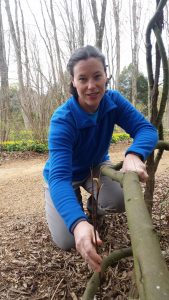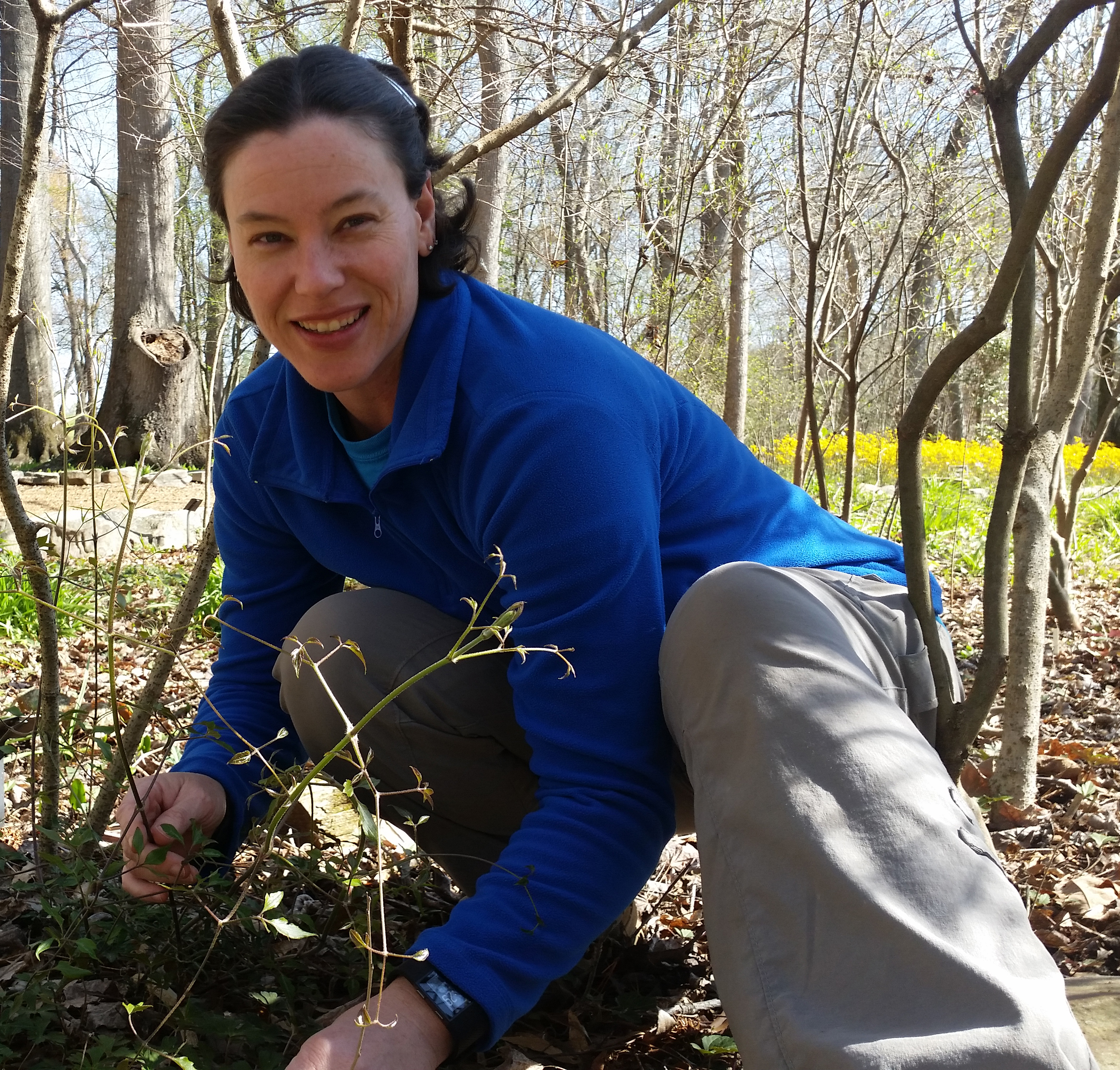 Hello there! My name is Tracy, and I am the assistant curator at the Huntsville Botanical Garden. “What, exactly, does an assistant curator do?” you might ask. Well, I’ll tell you.
Hello there! My name is Tracy, and I am the assistant curator at the Huntsville Botanical Garden. “What, exactly, does an assistant curator do?” you might ask. Well, I’ll tell you.
I help our Curator, Mike Gibson, to ensure our plant records, informative signs and maps are kept up-to-date. Our Garden is growing and changing all the time (you may have noticed a little construction project going on). New buildings aside, there are 30+ employees and countless volunteers making changes to 112 acres on a daily basis, so making sure that we have current location and attribute information (from memorials to underground utilities to threatened or endangered species) is a full time gig.
Additionally, the widespread adoption of mobile technology provides a lightning-fast way to reach out to our visitors to help educate them about horticulture and sustainability; but only if we can easily share our information on that platform. To that end, I am in the process of transitioning our AutoCAD map into a Geographic Information System (GIS). Five years ago, I’d never dreamt I’d be learning any kind of computer programming! AutoCAD and ArcMap, the GIS software we are moving to, do not play well together; but once we get a fully functional GIS we will be able to do amazing things. The goal is to build maps that are linked with our plants database to allow for the intuitive use and effortless sharing of our plant records with the public. Picture a map that is searchable like a database! That’s only the beginning. While the transition will take some time, this technology has already positioned us to take advantage of advances in field data collection methods which will really increase our ground survey efficiency. Eureka!
Plant conservation and advocacy is another big piece of what I do, and one that is near and dear to my heart. Generally speaking, the purpose of a botanical garden is to collect, identify, protect, inventory, document, and understand the diversity of the plants in its collections. Disappearing habitat for many species only make this more imperative: it is estimated that a third of the world’s known plant species are protected within the collective boundaries of botanical gardens and arboreta worldwide. I take our mission statement very seriously when it talks about world-class recognition, specialized research, and conservation of our natural resources. I believe that we can absolutely achieve those goals by enhancing the visitor experience, adding capacity to our horticulture education programs, and building towards meaningful contributions in ornamentals research. Our recent national accreditation of the Holmes Trillium Collection through the Plant Collections Network is just one initiative intended to elevate awareness the many wonderful plant collections we maintain. I want everyone who comes through our gate to remember the awe and delight they experienced as children discovering how amazing nature is. What’s more, I want people to take what they learn here and implement conservation and sustainability in their own lives and actions. In this way, we can all improve our community.

